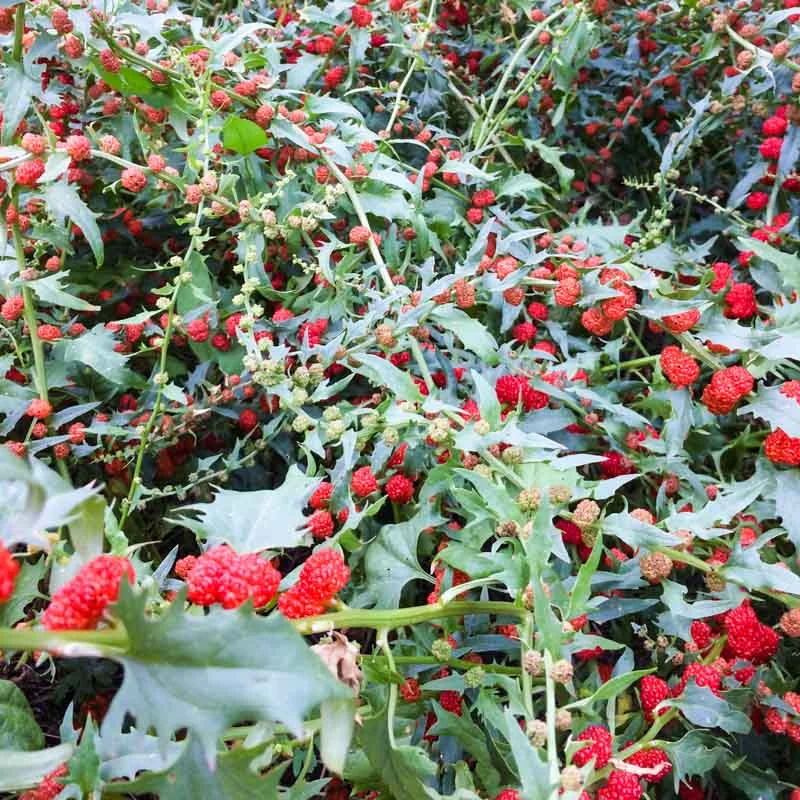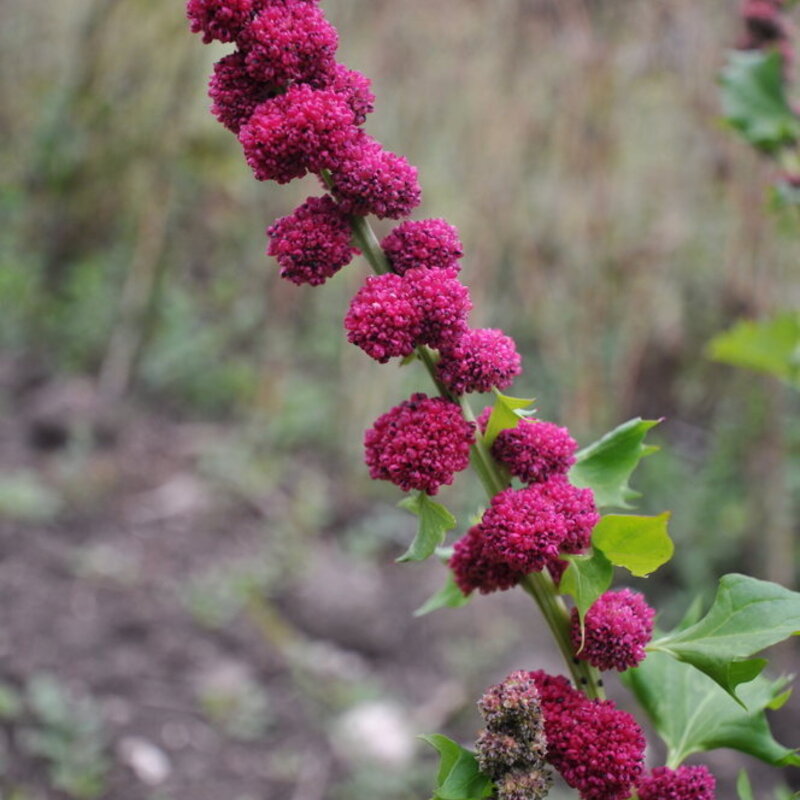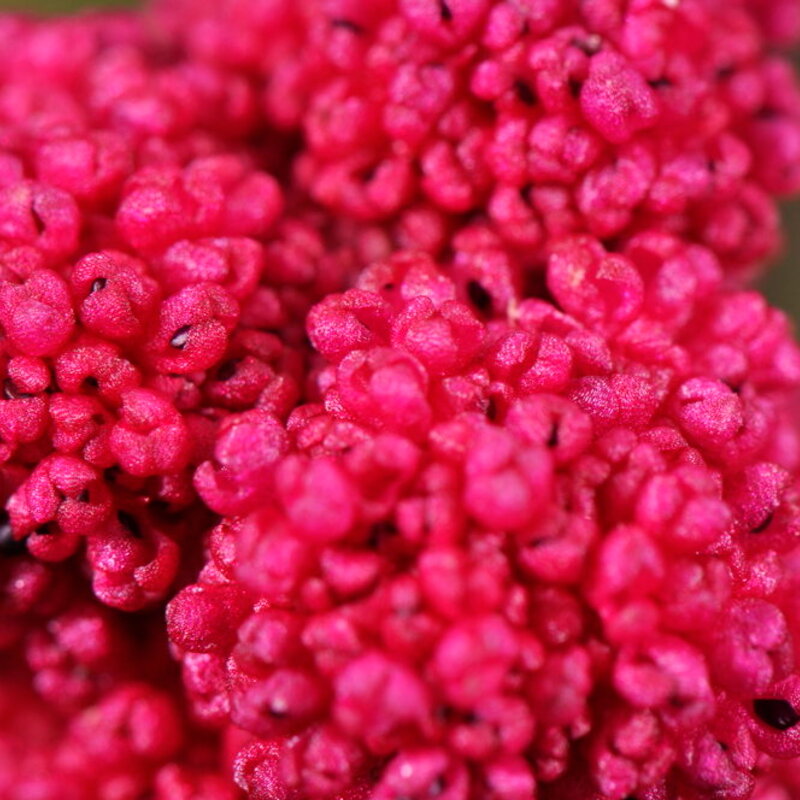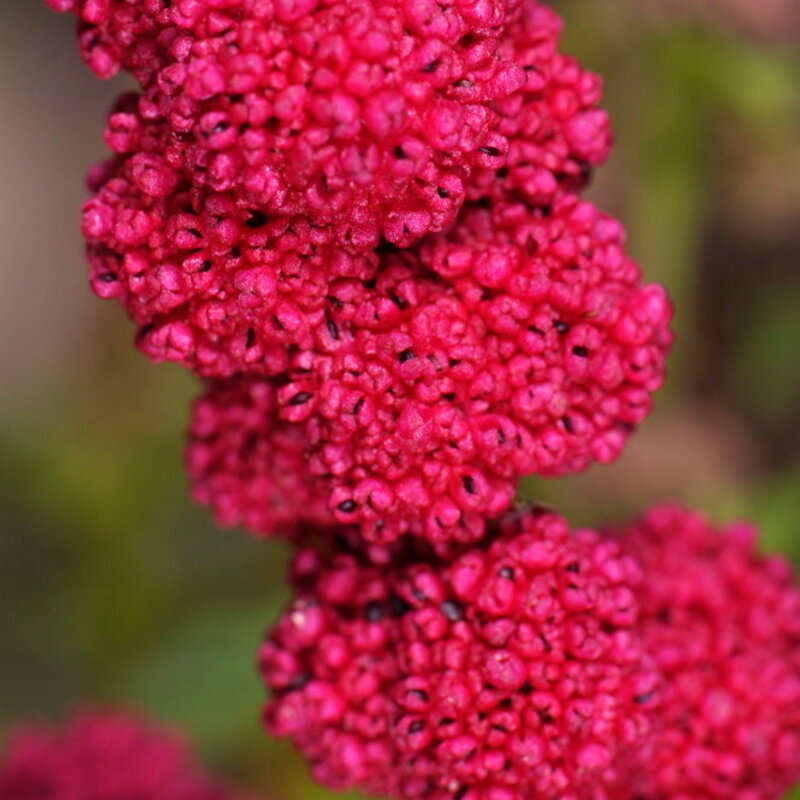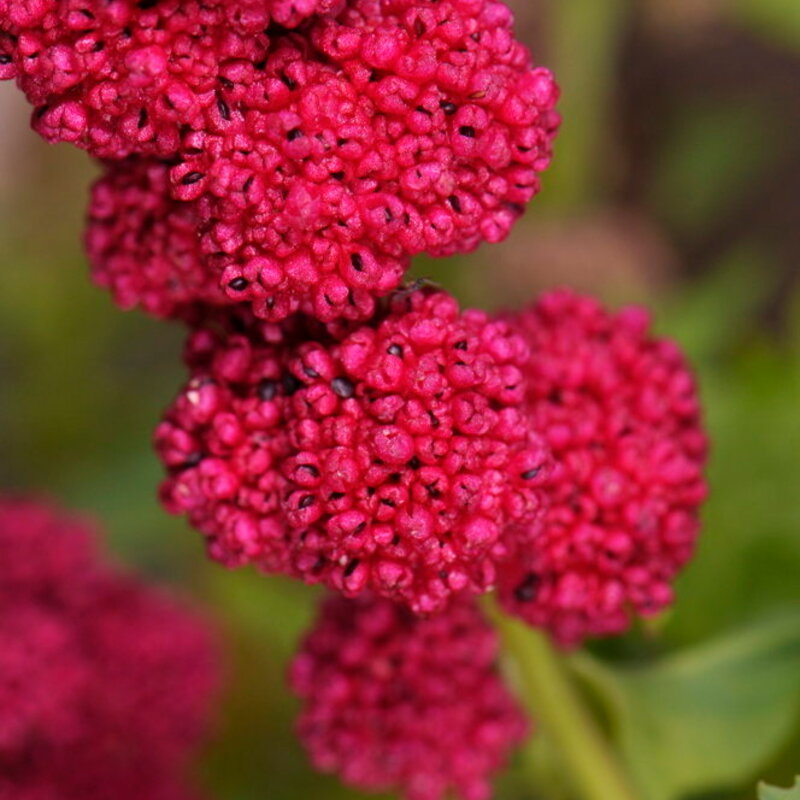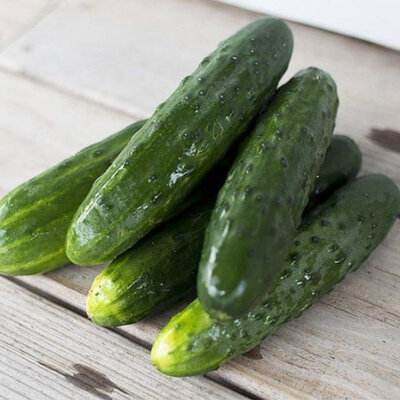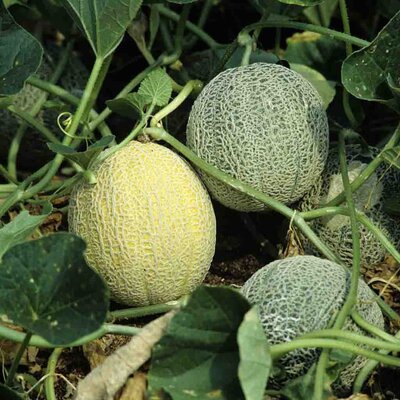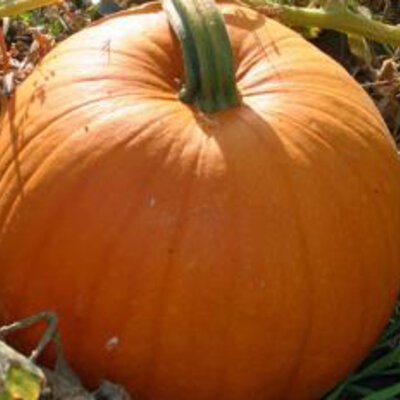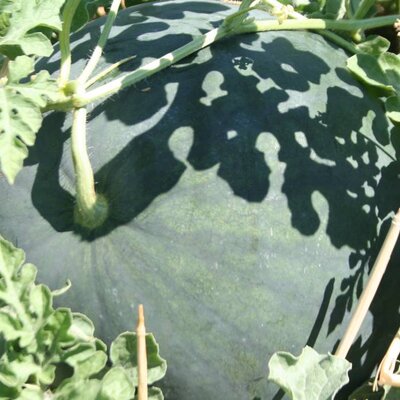Strawberry Spinach - Lamb's Quarters and Company
This species forms a rosette of triangular, toothed, dark-green leaves. It then unfurls a stem 1 m high, bearing fleshy, glomerular fruits that look like small strawberries and taste sweet, reminiscent of beet.
The leaves can be eaten raw when young or cooked. Fruits are harvested when ripe.
What are the characteristics of strawberry spinach?
Strawberry spinach, Chenopodium capitatum or Blitum capitatum, is a species of leafy vegetable native to North America. It was first mentioned in Vilmorin-Andrieux's Les Plantes Potagères in 1883. Now cultivated for both its appearance and nutritional qualities, this original, hardy plant forms a rosette of triangular, toothed, dark-green leaves, which can be prepared cooked or raw. Its juicy red berries, similar to small strawberries, are appreciated for their sweet, beet-like flavor.
How to sow strawberry spinach?
This species is sown from April to June in the open ground, directly in the vegetable garden. This plant prefers rich, cool, clay soil, and a half-shaded position. Too much heat can be detrimental to the development of strawberry spinach. For cultivation in greenhouses or unheated conservatories, it is possible to sow in autumn for harvesting in winter.
- Sow seeds directly in place, 2 cm deep, in rows 30 cm apart;
- Mulch the soil to keep the spinach cool;
- Thin to 25 or 30 cm when the plant has 4 to 5 leaves;
- Water regularly.
In the vegetable garden, this plant enjoys the company of beans, cabbage, celery and lettuce.
How to eat strawberry spinach
Harvesting takes place between June and October. Pick the leaves one by one as needed, to stimulate the appearance of new ones. Be careful to eat them in moderation, as they contain oxalic acid, also known as "sorrel salt". In small doses, this substance binds calcium. In large quantities, it can cause kidney problems and dietary deficiencies. As for the fruit, it should be harvested when ripe and burgundy in color.
In cooking, the leaves can be eaten raw in salads, or cooked. The juicy fruit is used to make jam and coulis.
These products may also be of interest to you
in the ground
Sow in the ground, in rows 30 cm apart. Thin to 25-30 cm at the 4-5 leaf stage. Sun is recommended, but too much heat is detrimental to strawberry spinach. In southern France, it's best to sow in a semi-shaded spot in the garden. For cultivation in greenhouses or unheated verandas, it's possible to sow in autumn, for a winter harvest of leaves.
April, May, June
June, July, August, September, October
in the ground
semi-shade, sunny
medium
clayey, humus
fees, furniture, rich
Blitum capitatum
mid-season
500 seeds
juicy
Red
From 80 to 100 cm
triangular
North America
"Vilmorin-Andrieux "Les Plantes Potagères
This ancient species is native to North America. It is cited in Vilmorin-Andrieux's 1883 book "Les Plantes Potagères". A taxonomic change led to its name being changed from "Chenopodium capitatum" to "Blitum capitatum".



